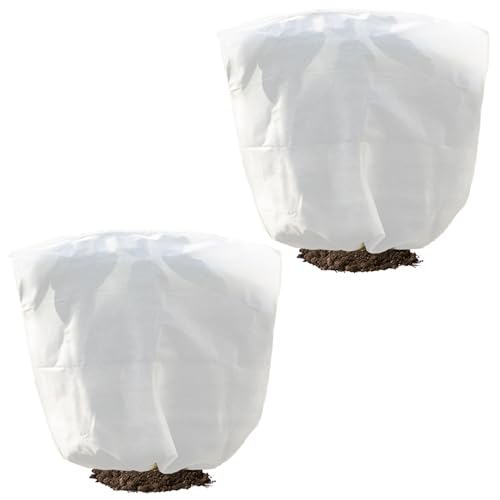How to protect palm trees in winter – expert gardening advice to keep your tropical plants safe during cold weather
Winterizing palm trees is crucial in colder, northern regions
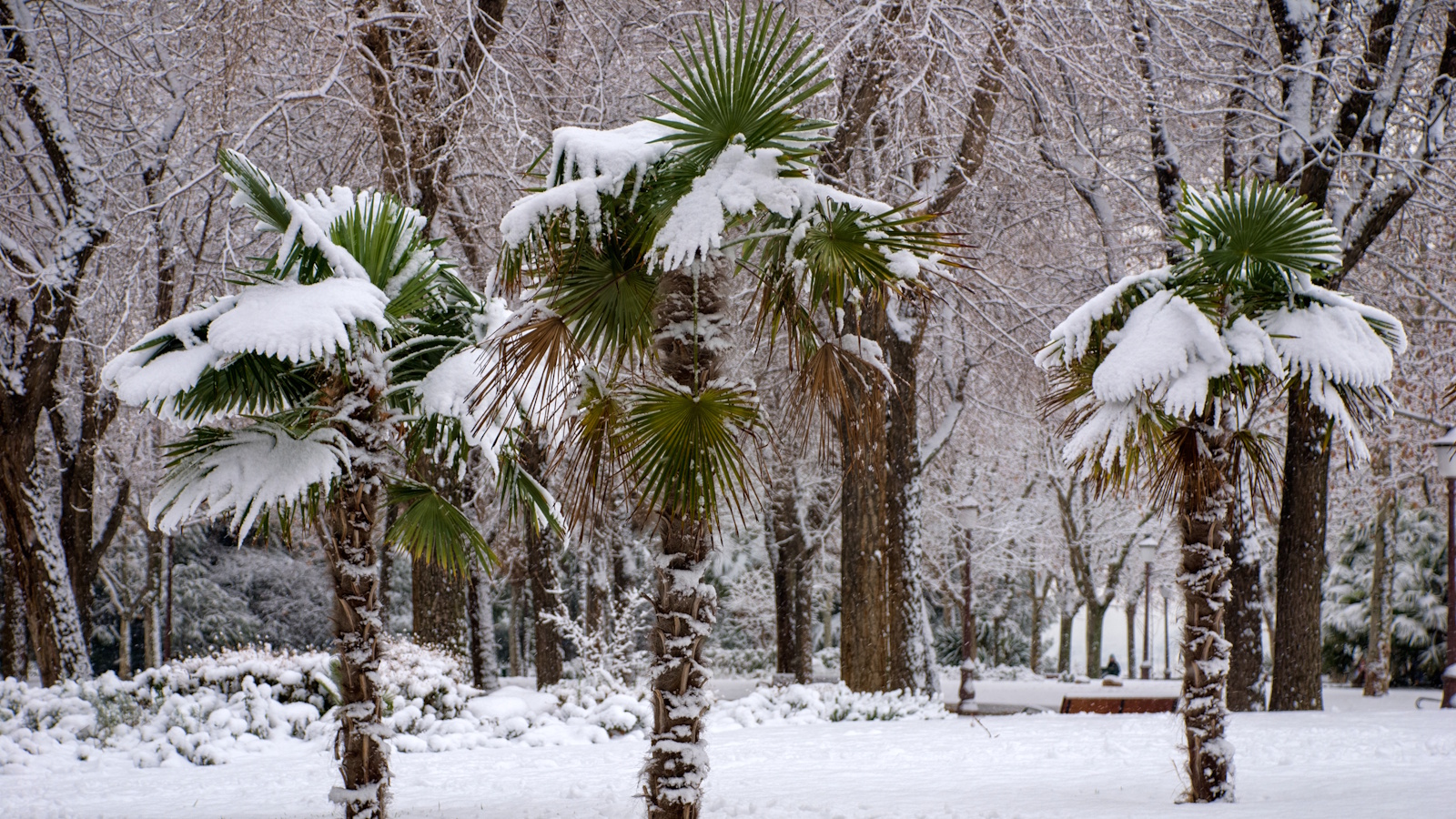

With large, fan-like leaves that can measure anywhere between one and 10 feet, landscaping with palms is a good idea for those who want dramatic and impactful tropical foliage to fill outside spaces.
Importantly, many palm trees are not winter hardy, particularly those species that are native to equatorial and tropical regions. Wind, snow and frost can prove problematic for palm trees, notably for younger specimens that have only been planted in the last few years.
For this reason, learning how to protect palm trees in winter is always sensible, especially if you garden in a cooler, northerly zone where the winter weather can prove challenging. Here, one tropical plant expert reveals the important steps you need to add to your winter gardening checklist to keep these ornamental trees healthy and happy during the colder months ahead.

How to protect palm trees in winter
Palm trees belong to the Arecaceae plant family, which contains more than 2,500 known species found across the world. With such a large grouping of plants, there is much diversity.
From the tropical coconut palm tree, Cocos nucifera, which is only hardy down to US hardiness zone 10, to the European fan palm, Chamaerops humilis, hardy to zone 8, a palm tree can be found to suit most tastes and preferences. Growing palm trees is not complicated, but there are some key rules to follow during the winter months.
1. Cover palm trees during winter
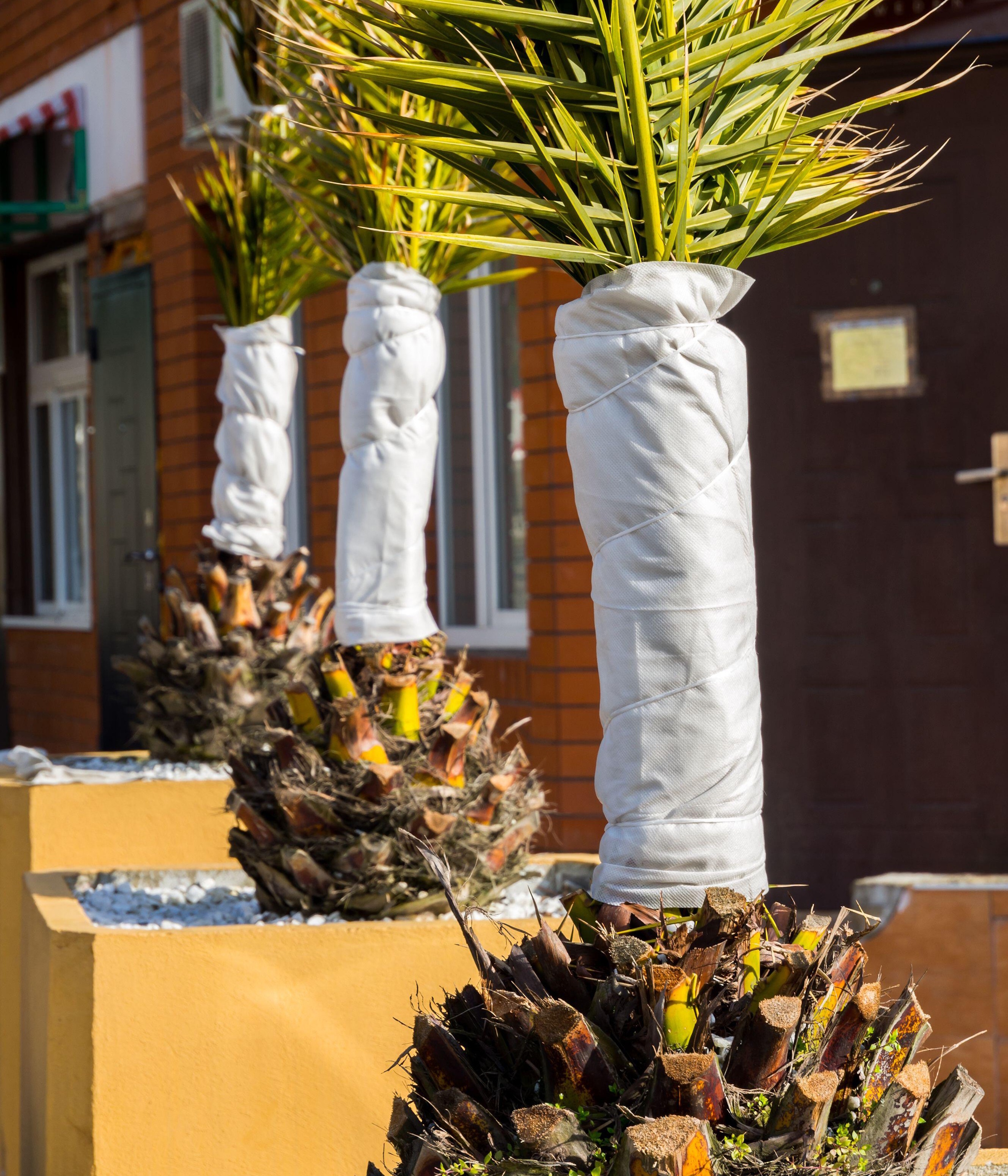
'Most palms are tropical plants and require a frost-free climate to grow outdoors,' says Tatiana Anderson, tropical plant expert and co-founder of Top Tropicals. 'However, there are a few exceptions, such as the cabbage palm or the palmetto palm, Sabal palmetto, which can tolerate light freezes.
'Additionally, there are some cold-hardy species that can handle harsher conditions,' Tatiana continues. 'Notable examples include the windmill palm, Trachycarpus fortunei, and the needle palm, Rhapidophyllum hystrix, which can be grown in cooler regions including US hardiness zone 6 - some of the toughest palm trees.' Live needle palm trees are available from Walmart.
Design expertise in your inbox – from inspiring decorating ideas and beautiful celebrity homes to practical gardening advice and shopping round-ups.
However, as Tatiana says, most species are tropical plants, and unless you grow one of these hardy species it is advisable to protect palm trees in winter because freezing temperatures can weaken your plants and leave them susceptible to diseases.
If your palm tree is small in size, you can cover it with something like this pop-up plant tent from Amazon. Just be sure to weigh it down with pegs or stones, as strong winds can pose a challenge for tents or frost cloths in winter.
'You want to cover any tender species in your yard,' Tatiana says. 'I suggest wrapping sensitive species in burlap, frost cloth or blankets. Avoid plastic, as it can trap moisture and cause damage.'
As with all palms, the growing point - or the crown - is the most important area to protect during winter. To protect the crown, 'bundle fronds upwards, and tie them with string before wrapping them up in material. This will shield the growing point,' Tatiana says.
For larger palms, you might need to ask a neighbor or gardening friend to lend you a hand, as navigating larger leaves can be challenging alone. As soon as the temperatures rise in early spring, you can remove any coverings.

Tatiana Anderson is the co-owner and co-founder of Top Tropicals, based in Fort Myers, Florida. Top Tropicals grow and sell a wide range of flowering and fruiting tropical plants.
2. Water palm trees before the first frost
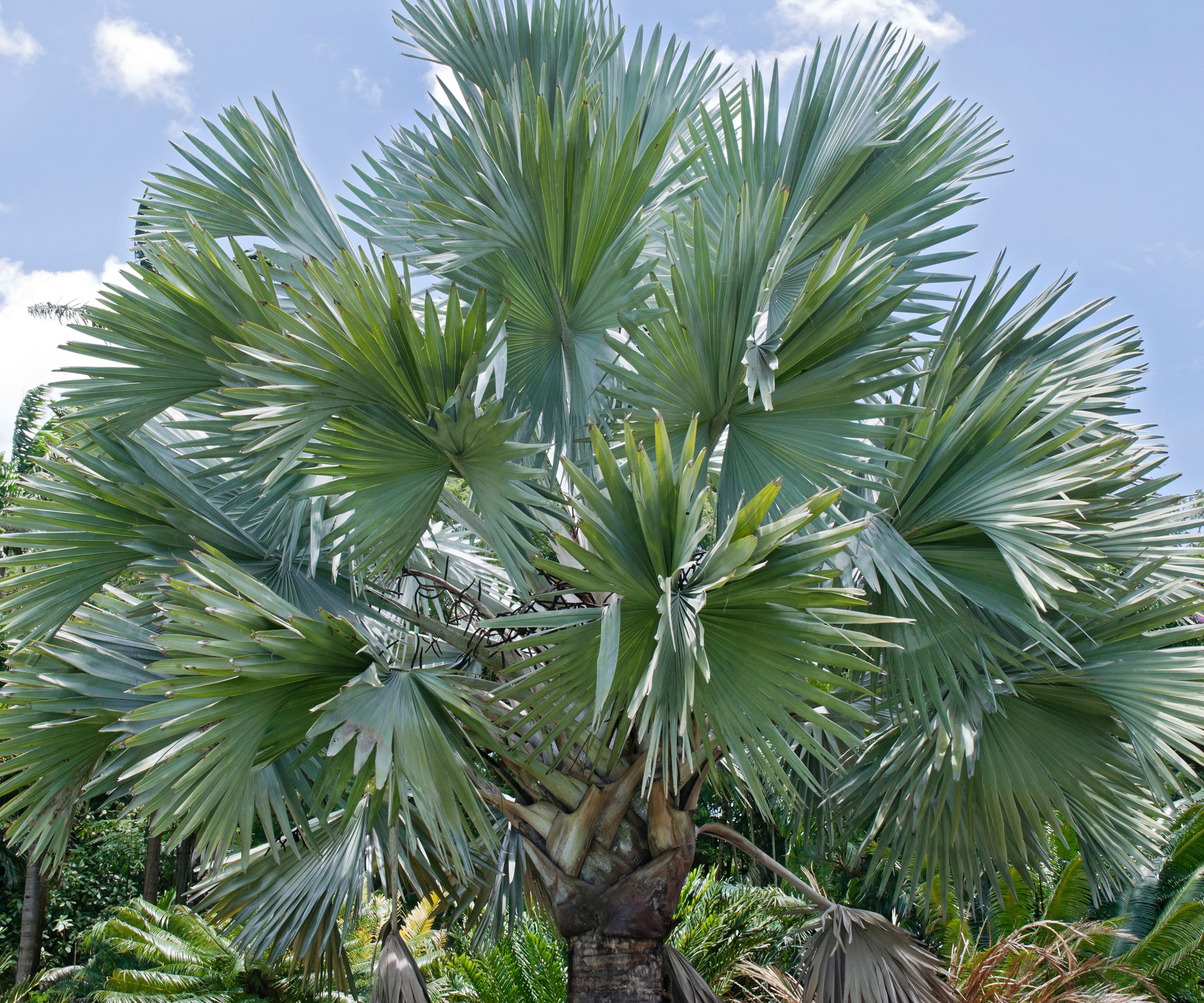
'Before winter arrives, I suggest giving your palms a good, deep watering,' Tatiana says. 'Doing this before a frost will help to stabilize soil temperature and prevent dehydration during the fall and winter months.'
While this might seem strange, watering deeply before the first freeze will protect your palm trees, as Tatiana says. This is best done slowly, ideally with drip irrigation, but a slow-running hose will also do the job just fine.
Do not water palm trees, or any trees for that matter, when there is frost or snow on the ground. Watering at this stage will simply turn to ice.
3. Mulch palm trees before winter
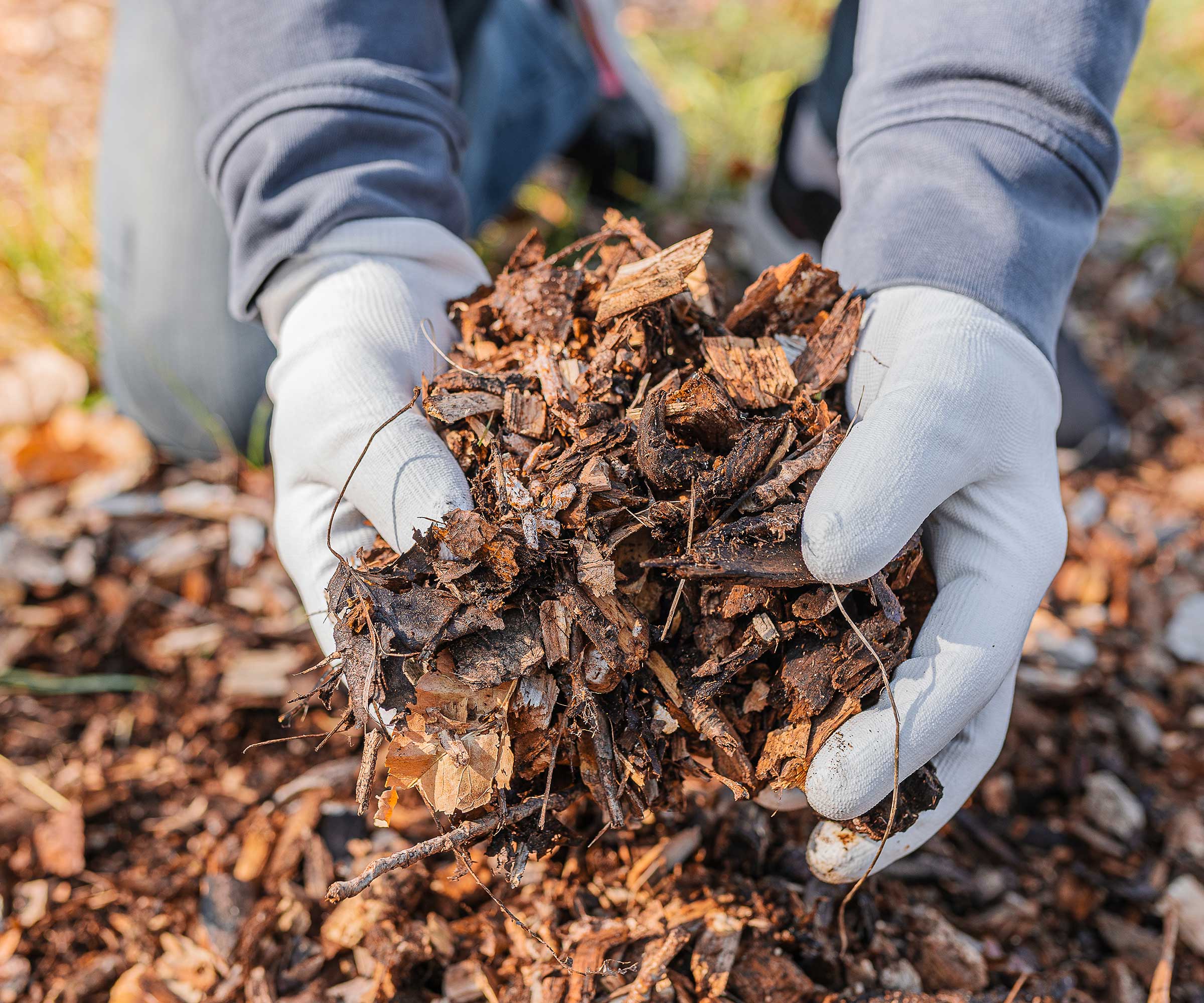
Mulching is always recommended during fall and will stop soil freezing in winter. 'My advice: mulch generously,' Tatiana continues. 'I find it best to apply a thick layer of mulch, usually around two or more inches. Apply this to the base of your palm tree to insulate the roots but keep the mulch a few inches away from the trunk to prevent rot.'
While there are many types of mulch to choose from, any organic mulch, such as wood chippings, bark or homemade compost will do. These natural materials will break down over time, protecting your palm tree through winter while also providing valuable nutrients to the yard and improving soil health.
Pine bark mulch is available from Walmart.
FAQs
Do palm trees lose their leaves in winter?
While most deciduous trees lose their leaves in winter, palm trees tend to be evergreen in their native environments. However, if you are growing a palm tree in a cooler region that does experience frost and snow, this can cause the tree to defoliate. In most cases, if you cover and protect your palm, the leaves should survive, although if any do turn brown and drop, do not worry. So long as the crown is protected, your tree will produce new shoots in spring.
Can you use lights or heaters to protect palm trees?
'Yes, you can use lights to protect palm trees in winter,' Tatiana says. 'Place Christmas lights (non-LED) near your tree, ensuring they’re safe and don't touch the foliage.' Simply wrap festive festoon lights around the trunk of your tree which will produce enough to protect it while also looking festive. However, doing so for a limited period and only during the coldest part of winter is best, so as to not damage your tree.
Finally, avoid completing any palm tree pruning until the spring. If your palm is large and bushy, this can help to provide protection and insulation during the winter months, so keep your secateurs and pruning saw in the potting shed until March or April, at which point you can give your tree a haircut. For more pruning information, see our guide on when to prune trees.

Thomas is a Content Editor within the Gardens Team at Homes and Gardens. He has worked as a professional gardener for both public spaces and private estates, specializing in productive gardening, growing food and flowers. Trained in Horticulture at the Garden Museum, he has written on gardening and garden history for various publications, including The English Garden, Gardens Illustrated, Hortus, The London Gardener and Bloom. He has co-authored a Lonely Planet travel book, The Tree Atlas, due out in 2024.

